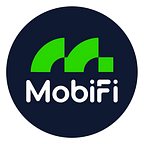Looking to the future: integrating Polkadot
Corda and Ethereum are MobiFi’s blockchains of choice. It’s around these networks that we’re building our next-generation transportation platform, increasing efficiency for providers and upgrading the user experience.
However, the preference for these protocols doesn’t mean that we will ignore other blockchains. In the future, MobiFi has plans to integrate protocols like Polkadot and Hashgraph. Polkadot, in particular, is appealing for its vision.
The case for Polkadot
Polkadot is a “multi-chain network” created to connect disparate blockchains into a single unified system. It’s been described as “a heterogeneous translation architecture that enables customized side-chains to connect with public blockchains.”
Polkadot promises a new level of cross-chain capability, future-proof upgradability, and user-driven network governance. Critically, it’s positioned to solve the most vexing problem the current version of Ethereum is facing, scalability.
Since the boom of decentralized finance (DeFi), projects requiring the execution of complex smart contracts have proliferated dramatically. This has created a bottleneck, and there are reports of fees associated with some of these complicated transactions running as high as $1,000.
For all practical purposes, this is a service outage — with the average user completely priced out of using the network.
Of course, Eth2 is live, and at the core of it are three scaling solutions (state channels, plasma, and sharding) intended to ease traffic on the network. This can help, but there is no guarantee. It’s still very much a work in progress. Conversely, Polkadot uses parachains [parallel processing chains] and is designed to go from 100K TPS to up to 1 million transactions per second.
Exploring alternatives
MobiFi’s ambition is to scale to millions of users worldwide, and this being the case, it’s only natural to consider Ethereum alternatives. Launched in 2020, Polkadot is among the newest and most promising Ethererum competitors. Therefore, MobiFi intends to leverage Polkadot and contribute to building a bridge between Corda and Polkadot.
Polkadot has a main network, called a “relay chain,” where transactions are permanent, and user-created networks, called “parachains.” Parachains are application-specific data structures that are globally coherent and validatable by Polkadot validators. They can be customized and feed into the main blockchain so that parachain transactions enjoy the same security as the main chain.
Once complete, the Corda-Polkadot bridge will be running as a parachain, which can interpret Corda messages (from collator to validators and to the relay chain consensus). Communications from the bridge to Corda, such as token and asset transfer transactions, will be captured by the oracle node on the Corda network. After that, the transaction will follow the Corda transaction follow for the validation and signing process.
This bridge will offer seamless communication between the MobiFi economy, Corda Dapps, and the broader Polkadot ecosystem. It will also support token transfers, general asset transfers (e.g., NFTs), cross-chain arbitrary data, and hybrid cross-chain applications in the long term.
In practice
An example. User A and user B both employ an enterprise blockchain network to operate their transportation businesses. User A wants to trigger a payment action for a service provided to user B, which requires user B to pay user A in Zcash on an external blockchain.
User A initiates an obligation, creating a transaction with an output state and signature. Then user A gets the exchange rate from an FX oracle for Zcash. After receiving the exchange rate, the obligation term is based on the latest exchange rate of Zcash. User B initiates payment on the Zcash blockchain via the Polkadot-Corda bridge built by MobiFi.
The Corda settlement oracle will verify that the payment is received by the recipient’s Zcash blockchain network. Once payment is verified, signatures are collected and sent to a notary, and both parties can confirm the obligation is settled in their respective vaults.
Final thoughts
Interoperability is one of the biggest buzz words in blockchain, and for a good reason. Interoperability will be one of the keys to breaking down siloed systems and increasing blockchain applications’ overall utility.
Not everyone will join Corda, and having other options to connect as many transportation service providers as possible will be important for MobiFi. Integrating with Polkadot can help us easily link those services in different blockchains, even if they are using different tokens.
MobiFi services (like car share) can also be provided by individuals. We believe that end-users should have the freedom to choose which blockchain network (platform) they use. And ultimately, that’s why this is a critical target on our roadmap — it increases the options for all MobiFi participants.
About MobiFi
MobiFi is a financial orchestrator for Mobility as a Service (MaaS). We’re building the transportation UX of the future — simplifying the mess of mobility services that many consumers face today while also allowing them to earn on their mobility credit. Once complete, our platform and tokenized payment system will boost mobility service provider efficiency and coax users into more sustainable transportation decisions.
